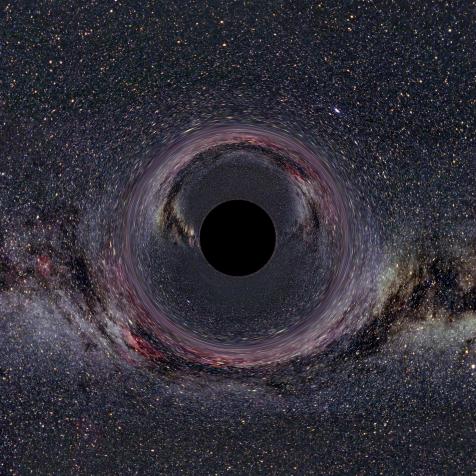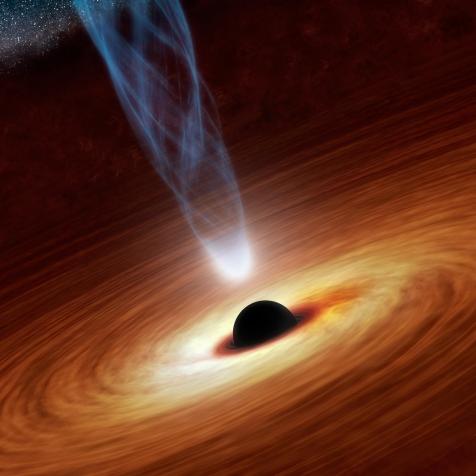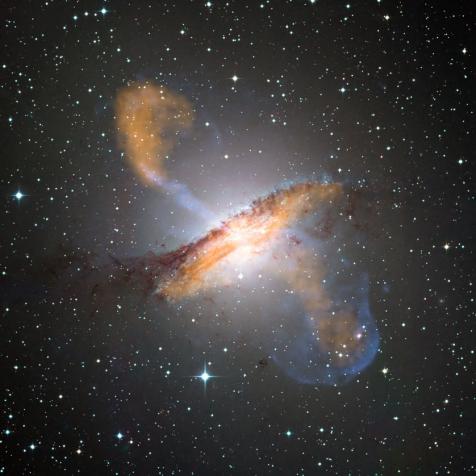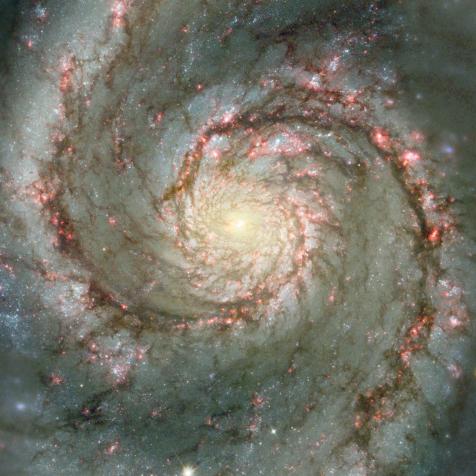
MARK GARLICK/SCIENCE PHOTO LIBRARY
The Case of the Missing Black Hole

You would think that objects weighing billions of times the mass of the sun would be easy to find. Alas, it’s rarely that simple.
Especially when it comes to black holes. And double-especially when it comes to the galaxy cluster Abell 2261, which by all rights should host a supermassive black hole at its center. But we can’t find it.
Finding Nothing in Nothingness
The problem with black holes is that they’re…well…um…black. And space is black too. So there isn’t exactly a lot of contrast, making direct detection of these monsters notoriously difficult.
Instead astronomers have turned to a variety of techniques for spotting black holes big and small throughout the cosmos. Sometimes they can watch stars orbit around them. Sometimes they can catch a whiff of a faint gravitational wave signal from when two black holes collide. But by far the most tried and true technique is to watch gas and dust fall to its doom.
The Power of Gravity
Black holes are objects of extreme gravity (infinitely extreme, in fact), and so their environments are a little bit chaotic. As gas and dust swarms down into that infinitely-deep abyss, it compresses and heats up, releasing a flood of energetic X-ray radiation in the process. If you see an exceedingly bright X-ray source in the universe, chances are it’s the last gasp of some giant clump of material before it disappears from the cosmos forever.
The Death of Black Holes
According to NASA, "A black hole is a place in space where gravity pulls so much that even light can not get out. The gravity is so strong because matter has been squeezed into a tiny space. This can happen when a star is dying." But what happens when a black hole dies?
What Are We Even Looking For?
So why don’t we see any such X-ray signature from the center of Abell 2261, a gigantic cluster of galaxies about 2.7 billion light-years away from Earth? As far as we can tell, every galaxy in the universe hosts a giant black hole in its center (even the Milky Way has such a monster, dubbed Sagittarius A*). There’s a really big galaxy in the center of Abell 2261. It should have a really big black hole. It should be shining bright in X-rays.
But repeated searches with NASA’s Chandra X-ray observatory have come up with nothing. Compounding the mystery is the fact that radio telescopes have revealed signs of recent carnage – massive plumes of super-heated material launched sometime within the past 50 million years. That kind of chaos can only be caused by a black hole, and yet there’s nothing to be seen in the present day.
Perhaps two medium-sized (but still giant, trust me) black holes collided, sending the newly-merged monster flying out of the core of the galaxy. Observations of stars in the central galaxy found a dense clump thousands of light-years away from the core, indicating that this is a possibility.
But frustratingly, there’s no X-ray signal coming from that clump, either.
We Can Only Guess
Our current best guess is that this particular dragon is slumbering in its galactic cave. If it just so happens that there’s no supply of fresh gas and dust, there’s nothing to slurp down and nothing to release the characteristic flood of X-rays.
While potentially an answer, “the giant black hole is just sleeping right now” isn’t entirely satisfactory. What happened to cause the destruction 50 million years ago? What’s going on with that dense clump of stars speeding away from the center? Why isn’t there even a tiny hint of X-rays?
Whatever’s going on in Abell 2261, let’s be glad it’s 2.7 billion light-years away.




















